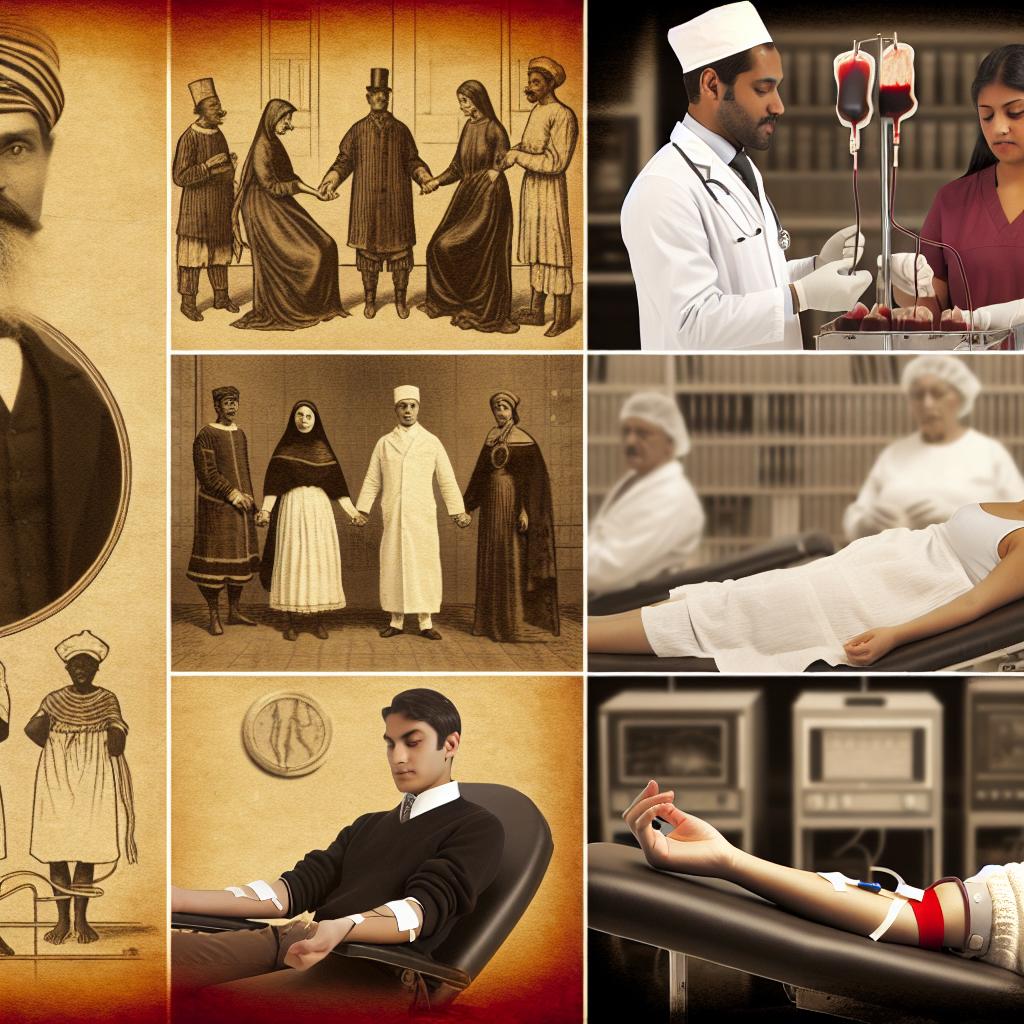The Early Discoveries
The history of blood donation is a fascinating journey that traces the evolution of medical practices from ancient times to contemporary medical marvels. This evolution reflects not only the advancement of science but also humanity’s enduring quest to save lives. The practice of transfusing blood, which forms the bedrock of modern medicine, began with rudimentary experiments in the early 17th century. During this period, scientists and medical professionals dared to explore the unknown, laying the groundwork for what would eventually become a safe and standardized medical procedure.
The first documented attempt to transfuse blood took place in 1665. Richard Lower, an eminent English physician, was the pioneer of this endeavor. He successfully carried out the transfusion of blood between two dogs, thereby demonstrating the possibility that blood could be moved from one living being to another without immediate fatal consequences. This breakthrough set the stage for future research and experiments with blood transfusion, despite the fact that it would take many more decades before human-to-human transfusions became practically viable.
Human Blood Transfusion Milestones
Despite Richard Lower’s early work, it wasn’t until the 19th century that human blood transfusion became a realistic possibility. The early part of this century saw significant advancements in medical understanding and technology, which together laid the groundwork for future progress.
In 1818, James Blundell, a British obstetrician, performed the first successful transfusion of human blood. His patient was a woman suffering from postpartum hemorrhage, a condition where severe bleeding follows childbirth. Blundell used blood drawn from the patient’s husband to save her life. While Blundell’s procedures were groundbreaking for their time, involving rudimentary equipment and limited medical knowledge, these initial transfusions were largely experimental. They were fraught with risks and uncertainties due to the lack of understanding of blood compatibility and the body’s potential adverse reactions to foreign blood.
The Challenge of Blood Compatibility
A pivotal development in the history of blood transfusion was the resolution of the compatibility challenge. In 1901, Austrian physician Karl Landsteiner uncovered a crucial piece of the puzzle by discovering the ABO blood group system. This discovery revolutionized transfusion practices.
The ABO blood group system explained the reasons behind the frequent failure and adverse reactions in previous transfusions. With this newfound understanding of blood groups, medical practitioners were empowered to carefully match donors and recipients, mitigating risks and enhancing the safety and efficacy of blood transfusions. Additionally, the discovery of the Rh factor in 1937 further refined the compatibility testing, enabling even safer transfusion practices.
The Rise of Blood Banking
With advances in blood transfusion and warfare injuries during World War I, the importance of having readily available blood supplies became increasingly apparent. Recognizing this pressing need, significant steps were taken towards the establishment of blood banks.
The first such institution was established in 1936 in Spain, spearheaded by Dr. Frederic Durán-Jordà. This development marked the beginning of organized blood donation and storage, ensuring that blood could be safely stored and made available during times of emergency. During World War II, the concept of blood banking was further refined and expanded, serving as a critical support system for both military personnel and civilians impacted by the conflict. By the mid-20th century, blood banking and organized blood donation systems had become integral components of modern medical infrastructure, underscoring their importance in effective medical care.
Modern Blood Donation Practices
As we advance into the present day, blood donation has become an essential practice in healthcare with millions of donations collected each year globally. Multiple innovations in medical techniques and technology have been introduced to ensure the safety, efficiency, and effectiveness of this life-saving procedure.
Sophisticated screening tests for infectious diseases, such as HIV, hepatitis, and syphilis, were introduced during the 1980s. These screenings dramatically improved the safety of blood transfusions, helping protect both recipients and donors from potential health risks. Today, blood donation processes include comprehensive donor eligibility assessments, advanced storage techniques, and efficient blood component separation processes. Modern healthcare systems rely on these structured and regulated practices to maintain an uninterrupted supply of safe blood products for patients in need.
Moreover, the critical role of volunteer blood donation is emphasized continually, ensuring that there is a constantly replenished supply to meet ongoing and emergency medical needs. For more comprehensive information on current blood donation guidelines and practices, resources from prominent organizations such as the American Red Cross or the World Health Organization provide valuable guidance.
Understanding the evolution of blood donation not only sheds light on medical advancements but also underscores the crucial role that organized, voluntary blood donation plays in saving lives worldwide today.
The journey from rudimentary experimental techniques to a sophisticated global system of blood donation and transfusion is a testament to human ingenuity and compassion. This progress serves as an inspiration for continued advancements in medical science, encouraging ongoing research and innovation to further improve the safety and efficacy of blood transfusions for future generations.
